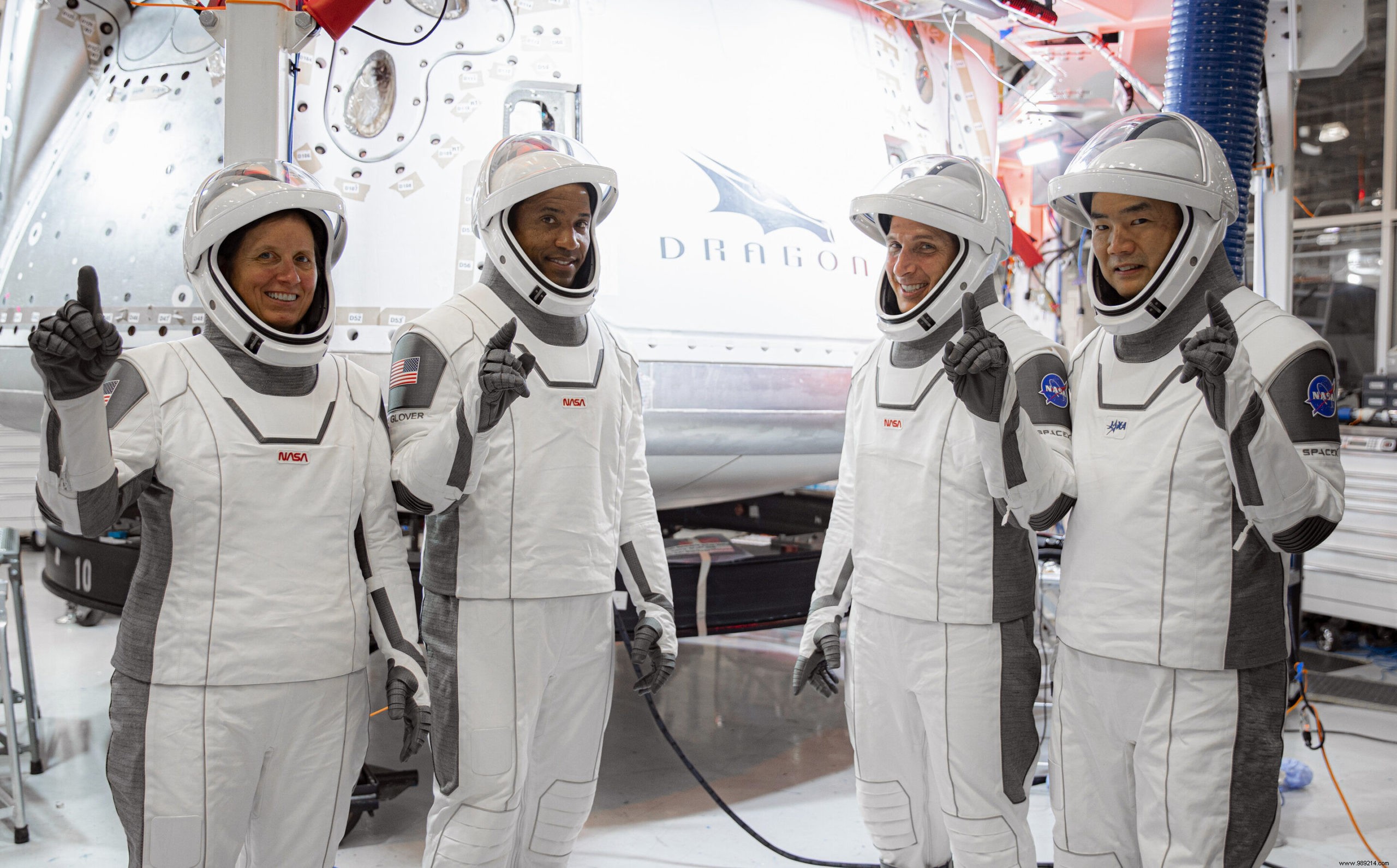SpaceX plans to launch the first operational flight of its Crew Dragon capsule to the International Space Station on November 14, 2020. The crew will consist of three American astronauts and a Japanese astronaut.
On May 30, SpaceX took another step by propelling astronauts Bob Behnken and Doug Hurley to the ISS. This was a first for the company, which until then had only transported freight to the station. It was also the first crewed mission to leave US soil since 2011 . Three months later, in August, the two astronauts then returned to Earth, successfully ending this mission dubbed Demo-2.
However, this mission was only a test flight. Called Crew-1, the first operational flight was normally scheduled to take place on October 31, but SpaceX encountered some engine problems that had to be recognized and resolved. It is now done and takeoff is now scheduled for November 14.
Aboard their capsule, dubbed Resilience , NASA astronauts Michael Hopkins, Victor Glover and Shannon Walker, along with Japan Aerospace Exploration Agency (JAXA) astronaut Soichi Noguchi, will blast off from historic Launch Complex 39A at NASA's Kennedy Space Center, Florida at 7:49 p.m. EST, or 01:49 a.m. French time . As you will have understood, from our point of view, take-off will therefore take place on Monday and not Sunday.
This mission will mark the first flight of an international crew aboard a NASA-certified private rocket and spacecraft.
Quarantined for about ten days, the four passengers went to the Kennedy Space Center on Sunday while awaiting their launch. Once this flight has been operated, all will remain on board the station for six months. They will then exchange places with the members of the Crew-2 mission, in which the French astronaut Thomas Pesquet will participate.
For its part, the "cargo version" of the capsule will also continue to make regular deliveries of food and supplies. SpaceX plans to launch seven capsules in total over the next fourteen months:three for crew and four for cargo.

Note that NASA's other commercial partner, Boeing, is not expected to fly its first crew until next summer.
As a reminder, the company had already carried out a first unmanned test last December. During this maneuver, the Starliner capsule had unfortunately suffered a software problem as soon as it entered space , resulting in what NASA calls an off-nominal insertion . In other words, the capsule landed in the wrong orbit, causing it to burn excess fuel. As a result, she was ultimately unable to reach the station.
Other failures have also been noted. Several months of investigation then led a NASA group to make 80 recommendations to improve the capsule. Since then, Boeing has rolled up its sleeves to try to solve all these problems. The company plans a second unmanned test flight early next year .